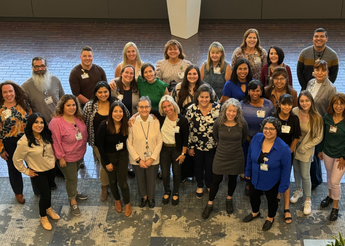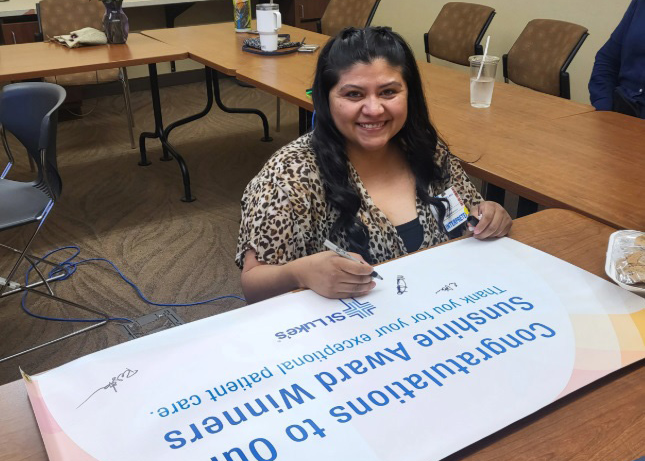
Priscila Johnston

Priscila Johnston
News & Announcements

By Dave SouthornLast Updated September 22, 2025
“With languages, you are at home anywhere.”
It is a simple, but powerful quote from Edmund de Waal’s 2010 book “The Hare With Amber Eyes.” The author was not a linguist or a professor, but an acclaimed potter who just happened to have a passion for communicating with all kinds of people.
At St. Luke’s, there is a team that shares that love and applies it daily in helping patients access care more easily and allows clinical teams to better express medical options and understand how patients are feeling and what care they are seeking.
“Interpreters and translators have an essential role, because you could not properly treat a non-English speaking patient without it … it’s very fulfilling to use your skills to help both patients and our medical teams,” said Oana Spanti Gattuso, St. Luke’s Language Access Services interim manager.
The Language Access Services team has approximately 30 members, primarily consisting of Spanish interpreters (verbal) and translators (written). There are also three American Sign Language interpreters.
According to Spanti Gattuso, interpreting services have been requested for 94 languages across St. Luke’s in the past year. Services are available at no cost to patients. Spanish interpreters are onsite in key areas such as emergency departments, labor and delivery and acute care. Interpreters also may travel for in-person communication, though video remote interpretation is also available.
“I really like the health care setting, it allows for a more conversational feel; you get to relate to patients and their caregivers,” said ASL interpreter Tracy Teske. “In the past, some patients didn’t have that autonomy … finally they can have better control of their medical care, which is phenomenal. We’ve come so far. Meeting other interpreters, I’ve noticed St. Luke’s has support you don’t find even in (more populated) places.”
But that need is certainly high in Idaho with a growing population. Spanti Gattuso said she hopes to add interpreters in languages such as Swahili and Arabic in the near future.
At St. Luke’s, there is a team that shares that love and applies it daily in helping patients access care more easily and allows clinical teams to better express medical options and understand how patients are feeling and what care they are seeking.
“Interpreters and translators have an essential role, because you could not properly treat a non-English speaking patient without it … it’s very fulfilling to use your skills to help both patients and our medical teams,” said Oana Spanti Gattuso, St. Luke’s Language Access Services interim manager.
The Language Access Services team has approximately 30 members, primarily consisting of Spanish interpreters (verbal) and translators (written). There are also three American Sign Language interpreters.

Maria Cervantes Juarez
Of the many successes the team has had, a recent example is Maria Cervantes Juarez, a medically qualified interpreter at St. Luke’s Magic Valley. She arrived in the medical center to connect with a Spanish-speaking mother whose infant son was in respiratory distress. Cervantes Juarez translated complex medical definitions and terminology in a way that the mother could easily understand.
Cervantes Juarez also volunteered to call the father’s work to let him know the situation. When he arrived, he was in tears, but she was able to comfort him as the boy was sent to receive specialized care. And, of note, she did all this outside her normal work shift.
“Loving language and loving helping people, it’s pretty special to combine that,” Johnston said.
Said Teske: “Helping to empower the patient is why we do it.”
Related Tags